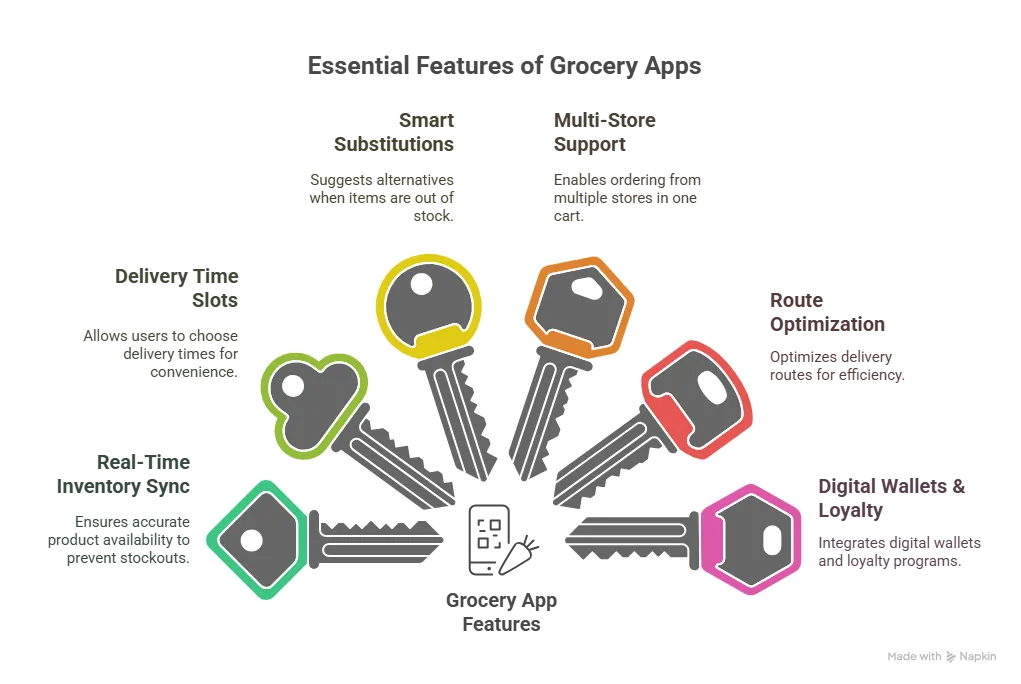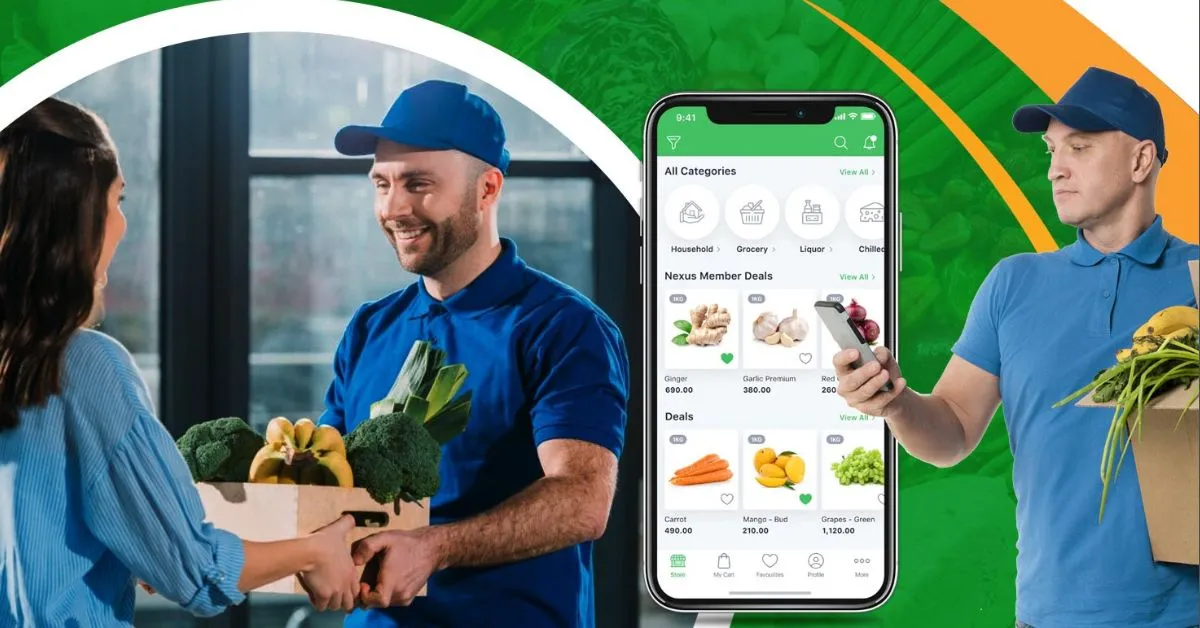Ever tried building a grocery delivery app from scratch? It’s like stocking a supermarket blindfolded—risky, expensive, and full of surprise shortages. Now, imagine doing it in a market where customers expect 30-minute delivery, fresh produce, real-time tracking, and no excuses. Welcome to the world AmazonFresh has dominated—and where you could carve your niche with the right clone script.
Grocery delivery isn’t just hot. It’s essential. From lockdown habits to busy lives, on-demand groceries are the new norm, not a pandemic phase. But here’s the kicker: building a high-functioning grocery app like AmazonFresh takes serious tech chops unless you leverage a clone script that’s already battle-tested.
At Miracuves, we’ve worked with everyone from solo founders to grocery chains looking to go digital. If launching a grocery delivery business is on your 2025 vision board, this breakdown of the top AmazonFresh clone scripts will help you get there—fast and without the headache.
What is an AmazonFresh Clone Script?
An AmazonFresh clone script is a pre-built software solution that mimics the functionality of the AmazonFresh app. It helps startups, grocery stores, and hyperlocal delivery businesses build a feature-rich platform with:
- Real-time inventory management
- Delivery partner app
- Order tracking and time-slot selection
- Location-based search
- Loyalty rewards and offers
It’s like inheriting the brain of Amazon’s grocery empire but customizing it with your own flavor—whether that’s organic-only, budget-friendly, or region-specific.
Read More : AmazonFresh App Features List: What Makes It Click with Modern Shoppers?
Top Features to Look For in 2025

Grocery apps are complex ecosystems. A solid AmazonFresh clone script must offer a seamless experience across three user types: buyers, delivery agents, and store managers.
1. Real-Time Inventory Sync
Stockouts kill trust. Your platform should sync product availability live with warehouses or local stores.
2. Delivery Time Slots
Give users the power to choose when their groceries arrive—and let your system optimize dispatch accordingly.
3. Smart Substitutions
If kale’s out of stock, the app should suggest spinach. Intelligent substitution logic adds serious value.
4. Multi-Store Support
Enable users to order from multiple stores in one cart—essential for urban customers with niche preferences.
5. Route Optimization for Delivery Agents
A built-in algorithm should optimize delivery routes to reduce time, fuel, and customer complaints.
6. Wallets, Coupons, and Loyalty
Integrate digital wallets, promo codes, and loyalty points to increase repeat orders.
Read More : Amazonfresh App Marketing Strategy: How to Win Big in the Online Grocery Race
Cost Factors & Pricing Breakdown
Amazon Fresh-Style Online Grocery Delivery Platform — Market Price
| Development Level | Inclusions | Estimated Market Price (USD) |
|---|---|---|
| 1. Basic Grocery Delivery MVP | Store listing, product catalog, cart & checkout, delivery address management, basic delivery slots, coupon support, order tracking, simple admin panel | $45,000 |
| 2. Full-Feature Amazon Fresh-Like Platform | Multi-store marketplace, zone-wise pricing, advanced filters & search, multiple payment methods, delivery scheduling, promo engine, ratings & reviews, substitutions, driver app, store dashboard, advanced admin & reporting | $110,000 |
| 3. Enterprise-Grade Grocery & Essentials Ecosystem | Multi-city & multi-country setup, dark-store support, warehouse picking flows, sophisticated routing & dispatch, loyalty & memberships, subscription orders, ERP/POS integrations, deep analytics, scalable cloud infra | $220,000+ |
These prices reflect the global development cost of building an Amazon Fresh-like grocery delivery platform — including catalog management, high-volume order handling, logistics workflows, and integrated payment infrastructure.
Miracuves Pricing for an Amazon Fresh-Like Platform
Miracuves Price: Starts at $2,899
Miracuves provides a ready-to-launch Amazon Fresh-style grocery delivery solution featuring multi-store marketplace, product catalog, cart & checkout, discount engine, time-slot delivery, order tracking, store & driver panels, and a powerful admin backend — all built on a robust PHP architecture.
Note
This package includes full non-encrypted source code, backend/API setup, web front-end, admin panel configuration, and deployment assistance — giving you a complete grocery delivery ecosystem ready to go live.
Launch your Amazon Fresh-style grocery platform with Miracuves and go live in days instead of months.
Delivery Timeline for an Amazon Fresh-Like Platform with Miracuves
Estimated deployment timeline: 3–9 days, depending on:
- Number of cities, zones, and store partners
- Catalog size, categories, and product attributes
- Delivery slot logic, fees, and promo rules
- Required store, rider, and support dashboards
- Branding, UI customization, and mobile app scope
Tech Stack
Built using PHP + MySQL with modular APIs — enabling reliable order processing, smooth catalog browsing, secure payments, and scalable performance for high-traffic online grocery delivery use cases.
Clone Script vs. Custom Build – Which One Wins?
Let’s break it down with a real-world lens. Building from scratch is like opening a new supermarket where even the shelves need design. Clone scripts? They’re plug-and-play stores ready for customers.
| Factor | Custom Development | Clone Script (Miracuves) |
|---|---|---|
| Time to Launch | 6–9 months | 3–9days |
| Initial Investment | $40,000+ | ~$2,899 |
| Feature Testing | From scratch | Pre-validated |
| Scalability | Requires planning | Built-in modules |
2025 Trends in Grocery Delivery
Before you commit, look at the winds of change:
- Micro-fulfillment centers are replacing big warehouses for faster delivery.
- Voice ordering is being adopted in smart kitchens—think Alexa integration.
- Zero-waste packaging and sustainable sourcing are influencing consumer decisions.
- AI demand prediction helps prevent stockouts and overbuying.
You want a clone script that supports these evolutions—not just basic grocery checkout.
Source:
Statista – Online Grocery Shopping Trends 2025
Final Thoughts
Grocery delivery is no longer a side hustle—it’s a billion-dollar necessity. If you’re eyeing a market segment with high repeat usage and growing demand, launching with an AmazonFresh clone script could be your smartest move in 2025.
At Miracuves, we help innovators launch high-performance app clones that are fast, scalable, and monetization-ready. Ready to turn your idea into reality? Let’s build together.
FAQs
Still have questions about AmazonFresh clone scripts? Let’s clear them up.
What does an AmazonFresh clone include?
It includes buyer and delivery apps, store dashboards, admin panel, inventory management, and payment integrations.
Can I customize the app for my grocery chain?
Yes. With Miracuves, you can rebrand, modify flows, integrate regional payment gateways, and add advanced features.
What platforms does the clone support?
Miracuves provides iOS, Android, and web versions—all synced for real-time order management.
How do you handle perishable items?
The clone includes logic for expiry tracking, temperature-sensitive delivery, and smart substitution options.
Is it suitable for rural or tier-2 cities?
Absolutely. The platform can be adapted for regional language, limited SKU inventory, and cash-on-delivery.
What’s the ROI potential?
Most of our clients break even within 3–6 months, especially with the right hyperlocal marketing push.
Related Articles








